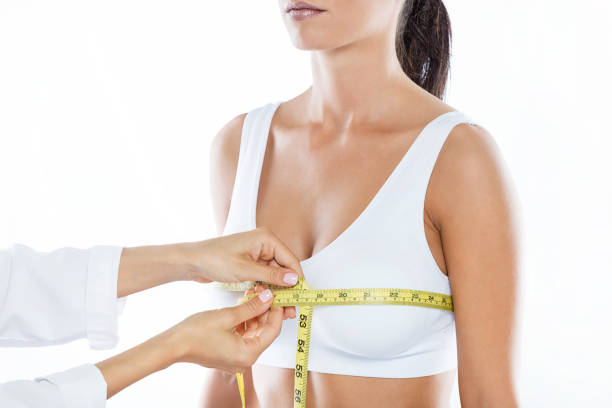Ladies, let’s talk about lifting those twins up! There are several types of breast lifts available to help you achieve the perky and youthful look that you desire. Whether it’s a sagging bustline caused by aging, weight loss, or pregnancy, there is a breast lift option out there just for you. But with so many different types of breast lifts out on the market, how do you know which one is right for your specific needs? Fear not! In this blog post, we’ll break down each type of breast lift and give you all the information you need to make an informed decision. So get ready to learn about the different types of breast lifts and find out which one will be your best fit!
Table of Contents
Introduction
If you are unhappy with the appearance of your breasts, a breast lift may be the right solution for you. Breast lifts can rejuvenate your look by improving the shape and position of your breasts.
There are several different types of breast lifts, each with its own advantages and disadvantages. The best way to determine which type of breast lift is right for you is to consult with a board-certified plastic surgeon. During your consultation, your surgeon will evaluate your individual goals and physical attributes to help you choose the best procedure for your needs.
The three most common types of breast lifts are: traditional breast lift, circumareolar breast lift, and vertical breast lift.
A traditional breast lift involves making an incision around the areola (the dark area surrounding the nipple), down the front of the breast, and sometimes along the underside of the breast. This incision allows your surgeon to reposition your nipple and remove excess skin from around the areola and from down the front of the breast. A traditional breast lift can also be combined with an augmentation (breast implants) to improve both the shape and size of your breasts.
A circumareolar or “donut” breast lift involves making a smaller incision around the circumference of the areola. This technique is often used when only a small amount of skin needs to be removed and when there is minimal sagging present. It can also be used in conjunction with an augmentation for patients
What is a Breast Lift?
A breast lift is a surgical procedure that involves raising and reshaping the breasts. It is often performed to correct drooping or sagging breasts, which can occur due to pregnancy, weight loss, or aging. Breast lifts can also be used to improve the appearance of the breasts in cases where there is asymmetry or ptosis (drooping). The surgical technique used for a breast lift will vary depending on the individual’s goals and the extent of correction that is needed.
There are three main types of breast lift: crescent, donut, and anchor.
Crescent lifts are also known as partial lifts or mini-lifts. This type of lift involves making a small incision along the top half of the areola (the dark area around the nipple). The crescent-shaped section of skin above the incision is then removed, resulting in a lifting of the nipple and areola. Crescent lifts are typically used for mild cases of drooping or sagging.
Donut lifts, also called periareolar lifts, involve making an incision around the edge of the areola. The donut-shaped section of skin surrounding the incision is then removed, along with some underlying tissue. This type of lift can be used for moderate cases of drooping or sagging.
Anchor lifts, also called traditional or full lifts, involve making an incision along the inframammary fold (the crease beneath the

Types of Breast Lifts Available
There are four main types of breast lift surgery: crescent, donut, lollipop, and anchor.
Crescent: A crescent lift is also known as a partial lift. It involves making a half-moon incision along the top of the areola. This type of lift is often used to correct mild ptosis (drooping).
Donut: A donut lift, also called a circumareolar or Benelli lift, involves making an incision around the edge of the areola. This type of lift can be used to correct mild to moderate ptosis.
Lollipop: A lollipop lift, also called a vertical or Wise pattern lift, involves making an incision around the edge of the areola and down to the crease under the breast. This type of lift can be used to correct moderate to severe ptosis.
Anchor: An anchor lift, also called an inverted-T or T-shaped lift, involves making an incision around the edge of the areola, down to the crease under the breast, and along the natural curve under the breast. This type of lift can be used to correct severe ptosis.
Preparation for a Breast Lift
A breast lift, also called a mastopexy, is a surgical procedure to raise and reshape sagging breasts. It involves removing excess skin and tightening the surrounding tissue to support the new breast shape.
There are several different types of breast lifts, and the right one for you will depend on your individual anatomy and goals. Your plastic surgeon can help you choose the best option during your consultation.
In preparation for your breast lift, you will need to:
– Choose a board-certified plastic surgeon with experience performing the procedure you desire
– Schedule a consultation to discuss your goals and expectations
– Get lab testing or a mammogram if requested by your surgeon
– Stop taking certain medications that could interfere with healing (such as aspirin or other blood thinners)
– Quit smoking at least six weeks before surgery to reduce the risk of complications
– Arrange for someone to drive you home after surgery and stay with you for at least the first night
The Procedure and Recovery Periods
A breast lift, also called a mastopexy, is a surgical procedure to raise and reshape sagging breasts. It involves the removal of excess skin and tissue, and sometimes the addition of implants.
There are several different types of breast lifts, each with its own advantages and disadvantages. The right type of lift for you will depend on your individual anatomy and goals.
The most common types of breast lifts are:
-Traditional Breast Lift: Also called an anchor lift, this is the most invasive type of lift. It requires a large incision around the areola (the dark area around the nipple) that extends down to the crease underneath the breast. This type of lift provides the most dramatic results, but also has the longest recovery time. You can expect to be out of work for at least two weeks after this surgery.
-Lollipop Breast Lift: This type of lift gets its name from the shape of the incisions, which resemble a lollipop. It requires an incision around the areola and another vertically down from the areola to the crease underneath the breast. This is less invasive than a traditional lift, but still has a significant recovery period of at least one week.
-Donut Breast Lift: Also called a circumareolar mastopexy, this is the least invasive type of breast lift. It only requires an incision around the areola, which leaves no visible scars once healed
Financing Options for a Breast Lift
There are many financing options available to help you pay for your breast lift. You can use credit cards, personal loans, medical financing, or even tap into your home equity.
Credit cards are a popular option for financing cosmetic surgery. Many cards offer 0% interest for a set period of time, which can give you some breathing room when it comes to making payments. Just be sure to read the fine print and understand the terms before signing up for anything.
Personal loans are another option to consider. There are many lenders who offer loans specifically for cosmetic surgery. The rates and terms will vary depending on the lender, so it’s important to shop around and compare options before making a decision.
Medical financing is another possibility. There are companies that specialize in providing financing for elective procedures like breast lifts. They often have flexible payment plans and can work with you to create a budget that works for you.
Finally, you could tap into your home equity to finance your breast lift. This is usually a last resort option, as it puts your home at risk if you default on the loan. But if you have equity built up in your home and you’re comfortable with the risks, it could be a good way to get the money you need.
Tips to Ensure Best Results from the Procedure
If you are considering a breast lift, there are a few things you can do to ensure the best possible results from the procedure. First, be sure to consult with a board certified plastic surgeon who has experience performing breast lifts. This will help ensure that you are a good candidate for the procedure and that your surgeon is properly trained to perform it.
Next, be sure to communicate your goals and expectations for the procedure to your surgeon. This will help them determine which type of breast lift is right for you and how to best achieve your desired results. Finally, be sure to follow all of your surgeon’s pre- and post-operative instructions carefully. This will help minimize any complications and ensure optimal results from your surgery.
Questions to Ask Your Surgeon Before Getting a Breast Lift
1. What experience do you have performing breast lifts?
2. What are the potential risks and complications associated with a breast lift?
3. How long will the surgery take, and what is the estimated recovery time?
4. Will I need to stay in the hospital overnight after the surgery?
5. What type of anesthesia will be used during the surgery?
6. Will I have drains placed during or after the surgery?
7. When can I expect to see results from the surgery?
8. How long will results from the surgery last?
9. Are there any non-surgical options for achieving similar results?
10. What are your fees for this procedure, and do you offer financing options?
Conclusion
As you can see, there are a variety of breast lifts available to help you achieve the look that you want. It is important to consult with a qualified plastic surgeon so they can evaluate your individual needs and recommend the best option for you. With the right type of lift, you can enjoy beautiful results that will give you more confidence and help improve your overall appearance. Take some time to consider which type of breast lift is right for your body shape and lifestyle in order to get optimal results from your surgery!
You May Also Like:How Breast Reduction Can Improve Your Overall Health and Fitness


